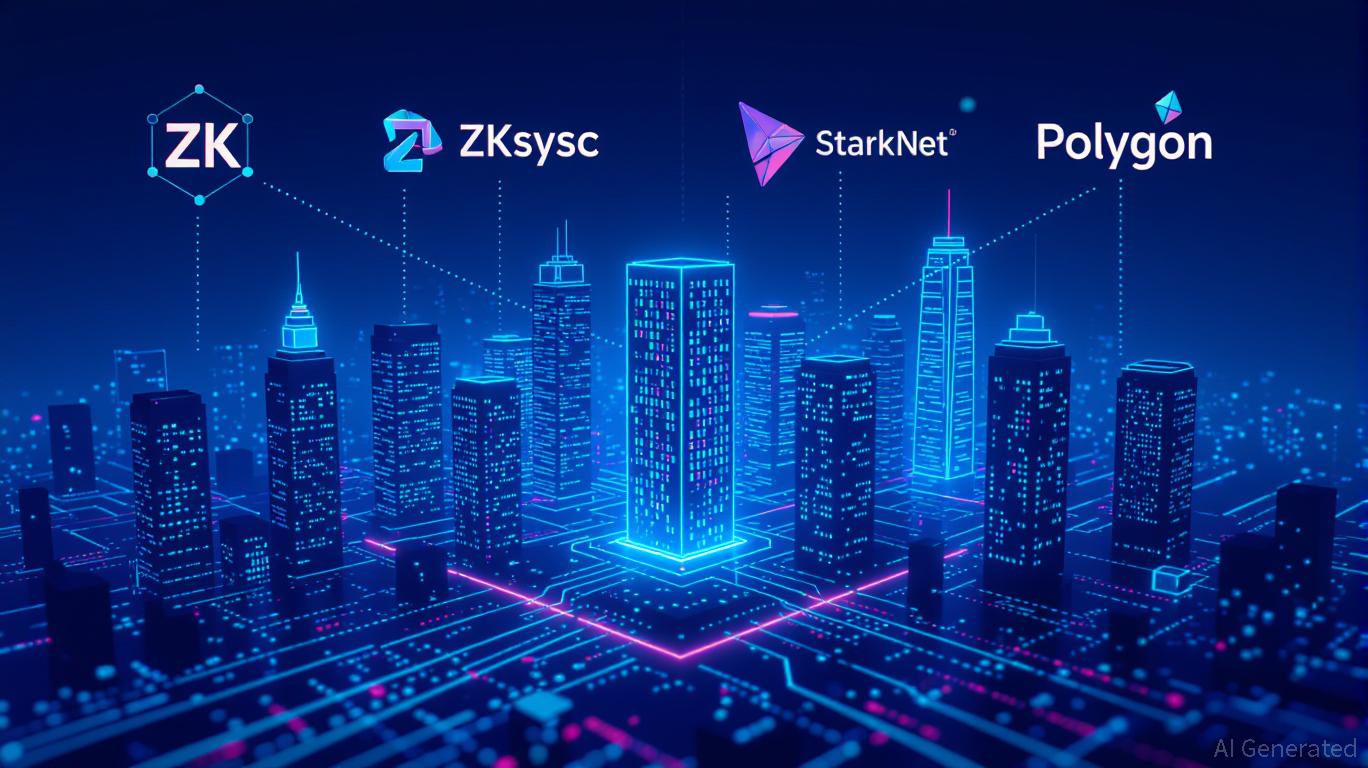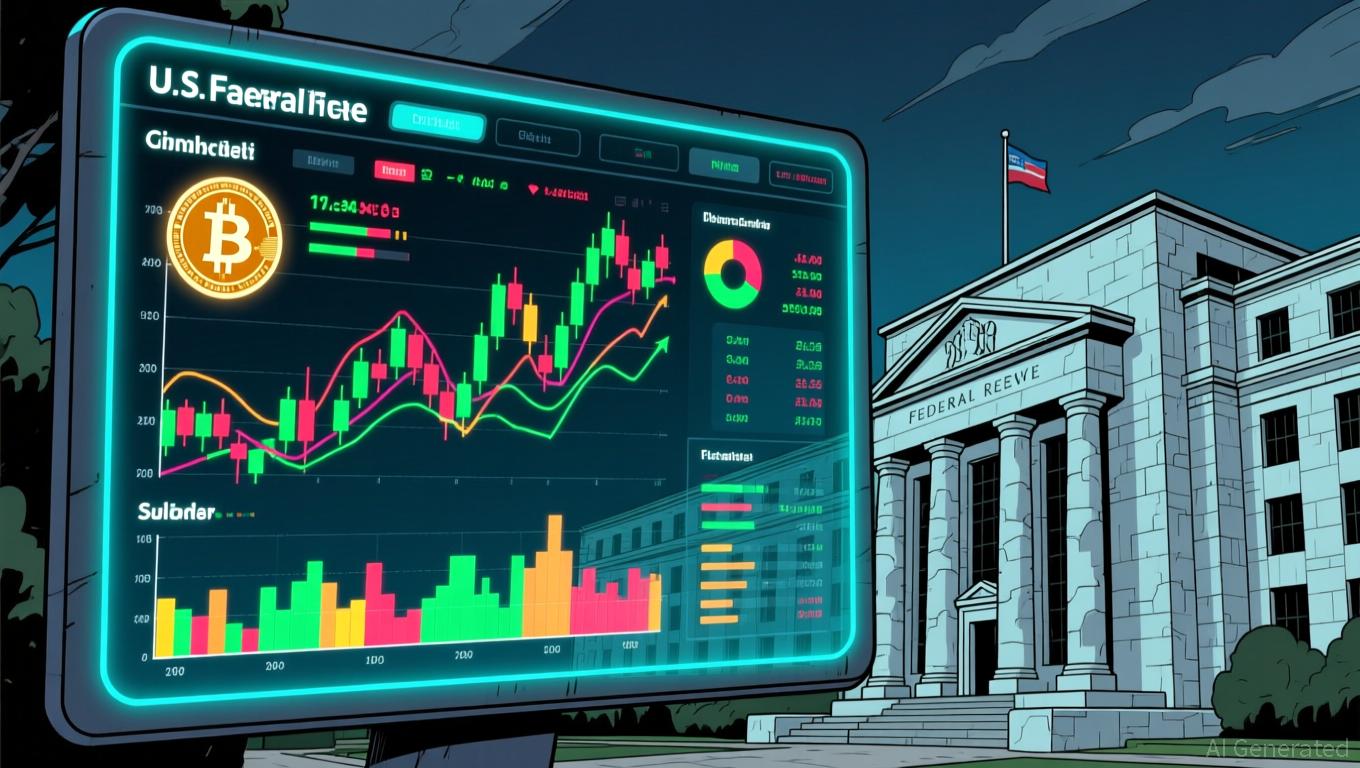Why Are Zero-Knowledge (ZK) Cryptocurrencies Gaining Momentum in 2025
- ZK cryptocurrencies surged in 2025 due to protocol upgrades, institutional adoption, and rising on-chain activity, reshaping blockchain innovation. - ZKsync's Atlas Upgrade achieved 43,000 TPS at $0.0001/tx, while StarkNet and Polygon optimized ZKPs to handle 10M+ monthly transactions with 90% lower fees. - Deutsche Bank , UBS , and Walmart adopted ZK solutions for cross-chain settlements and compliance, with Sisvida securing a U.S. MSB license to enhance institutional trust. - ZK rollups processed 15,00
Protocol Upgrades: Paving the Way for Widespread Use

The overall ZKP sector is expected to reach a value of $7.59 billion by 2033,
Institutional Validation: Compliance and Cross-Chain Integration
Institutional involvement has fundamentally altered the landscape for ZK cryptocurrencies. Leading organizations such as Deutsche Bank, Walmart, and HSBC are utilizing ZKP technology for cross-chain settlements, supply chain visibility, and meeting regulatory standards. For instance, UBS
Regulatory adherence is also a major factor. Sisvida Exchange, a global digital asset platform,
On-Chain Activity: Key Performance Indicators
On-chain statistics highlight the tangible value of ZK platforms. In November 2025, ZK rollups reached 15,000 TPS, with
ZKsync’s Q1 2025 data reveals a 276.2% quarter-over-quarter rise in average daily transactions,
Price Trends and Market Forces
Although ZKsync’s token value dropped from $0.18 to $0.07 in the first quarter of 2025,
Conclusion: ZK Cryptocurrencies Enter a New Phase
The rapid rise of ZK cryptocurrencies in 2025 marks a fundamental change, underpinned by technological breakthroughs, institutional confidence, and practical utility. As ZK-powered platforms continue to evolve—whether through ZKsync’s Atlas Upgrade, StarkNet’s advanced ZKPs, or Polygon’s cross-chain capabilities—the sector is set to lead the next wave of blockchain integration. For investors, the main message is clear: ZK’s long-term value lies in its capacity to provide privacy, scalability, and regulatory compliance at the core of global financial systems.
Disclaimer: The content of this article solely reflects the author's opinion and does not represent the platform in any capacity. This article is not intended to serve as a reference for making investment decisions.
You may also like
BNB News Update: Abu Dhabi's Web3 Strategy: Blockchain Fuels a Digital Transformation in Luxury Tourism
- Abu Dhabi's BNB Hack event highlights UAE's Web3 push in luxury tourism via blockchain solutions. - Innovations include USD1 stablecoin for cross-border transactions and WLFI token for loyalty/travel systems. - ADGM's regulatory framework attracts Web3 talent while tools like opBNB/Greenfield enable scalable dApps. - Luxury track emphasizes NFT concierge services and blockchain booking systems to enhance VIP experiences. - Event aligns with UAE's $100B digitization plan to solidify global blockchain lead

Trump’s Choice for the Fed May Transform the Unpredictable Path of Cryptocurrency
- Trump narrows Fed chair shortlist to Waller, Hassett, Warsh, Rieder, and Bowman, aiming to reshape monetary policy with rate-cut priorities. - Nomination timeline targets post-Thanksgiving meetings, with Trump emphasizing "merit" and balancing populist goals against Fed's dual mandate. - Crypto markets react to Fed uncertainty: Bitcoin rebounds above $87,000 while ETF inflows face selling pressure amid 80% rate-cut expectations. - TrustLinq's Swiss crypto-to-fiat platform and BitMine's $1B Ethereum strat

Japan Requires Crypto Platforms to Hold "Insurance" Reserves to Protect Investors from Potential Failures
- Japan's FSA mandates crypto exchanges to maintain liability reserves by 2026, protecting investors from losses via proportional funds and insurance options. - The rule follows major breaches like Mt. Gox and DMM Bitcoin , requiring reserves based on trading volume and risk profiles. - Regulators align crypto rules with traditional finance, expanding oversight to custodians and partners post-DMM hack. - Smaller exchanges may rely on insurance to ease liquidity pressures, though critics warn of increased c

‘OG whale’ who called the October crash has a $44.5M long on Ether
